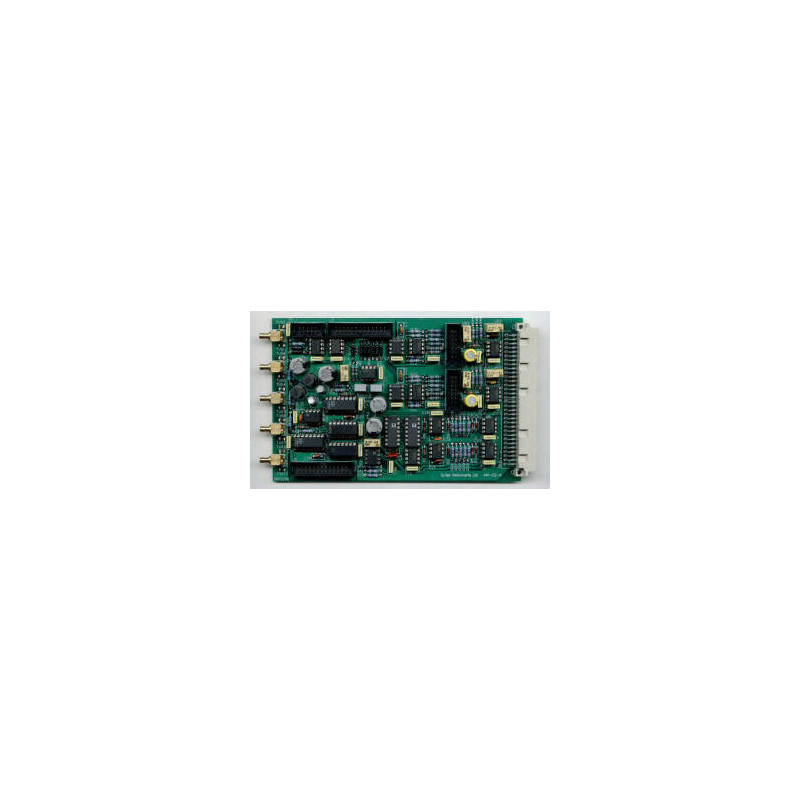SCT-441 Lock-In Amplifier

Reference number: SCT-441
A dual phase lock-in amplifier with manual setting, using jumpers, of input mode, sensitivity, low pass filter time constant and reference signal course phase control.


Reference number: SCT-441
A dual phase lock-in amplifier with manual setting, using jumpers, of input mode, sensitivity, low pass filter time constant and reference signal course phase control.

Need more info?
Contact our expert.
Optics & Optomechanics Team
Phone: +49 8153 405-11
Description
SCT-430 and SCT-441 are OEM analogue lock-in amplifiers. Both the single phase SCT-430 and dual phase SCT-441 are suitable for making amplitude and phase measurements but it is significantly easier with SCT-441. These pcb lock-in amplifiers offer a low cost solution to recovering noisy signals in many situations.
A dual phase lock-in amplifier with manual setting, using jumpers, of input mode, sensitivity, low pass filter time constant and reference signal course phase control. Can be used in either of the following three modes:
Dual phase operation – one input signal with two demodulators operating 90° apart providing both X and Y (or real and imaginery) components oft he input signal.
R calculation – on board cicuitry provides the modulus of the X and Y components.
Single channel 1F and 2F operation – one input signal and two demodulators operating at 1x and 2x the reference frequency to measure the first and second harmonics oft he input signal.
The input signal channel amplifies the input signal to a level suitable fort he demodulator(s). High performance, low-noise, broad-band amplifiers are used throughout. The input circuits can accept differential or single-ended inputs via the input SMB connectors. Options within the unit allo the outer SMB contact or screen to act as a high impedance differential input or allow it tob e connected to ground for single-ended operation
The input stage drives high bandwidth demodulators to recover the input signal.
The demodulator outputs are passed through low pass filters before bein amplified for output.
A single reference channel is used to generate the signals that drive the demodulator(s). A fine phase shifting circuit allows the reference signal to be phase shifted from 0° to 150 ° relative tot he signal input. A second circuit then produces signals that are phase shifted by 0°, 90°, 180° and 270° at both the reference frequency and twice the reference frequency.